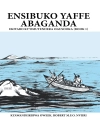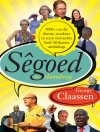Exploring the dynamic growth, change, and complexity of qualitative research in human geography, The SAGE Handbook of Qualitative Geography brings together leading scholars in the field to examine its history, assess the current state of the art, and project future directions.
‘In its comprehensive coverage, accessible text, and range of illustrative studies, past and present, the Handbook has established an impressive new standard in presenting qualitative methods to geographers.’
– David Ley, University of British Columbia
Moving beyond textbook rehearsals of standard issues, the Handbook shows how empirical details of qualitative research can be linked to the broader social, theoretical, political, and policy concerns of qualitative geographers and the communities within which they work. The book is organized into three sections:
- Part I: Openings engages the history of qualitative geography, and details the ways that research, and the researcher′s place within it, are conceptualized within broader academic, political, and social currents.
- Part II: Encounters and Collaborations describes the different strategies of inquiry that qualitative geographers use, and the tools and techniques that address the challenges that arise in the research process.
- Part III: Making Sense explores the issues and processes of interpretation, and the ways researchers communicate their results.
Retrospective as well as prospective in its approach, this is geography′s first peer-to-peer engagement with qualitative research detailing how to conceive, carry out and communicate qualitative research in the twenty-first century. Suitable for postgraduate students, academics, and practitioners alike, this is the methods resource for researchers in human geography.
Tabella dei contenuti
Introduction: Engaging Qualitative Geography – Dydia De Lyser et al
PART ONE: OPENINGS
Introduction – Dydia De Lyser
A History of Qualitative Research in Geography – Meghan Cope
′Throwntogetherness′: Encounters with Difference and Diversity – Stuart C Aitken
A Taut Rubber Band: Theory and Empirics in Qualitative Geographic Research – Steve Herbert
Policy, Research Design and the Socially Situated Researcher – Kari B Jensen and Amy K Glasmeier
Mixed Methods: Thinking, Doing and Asking in Multiple Ways – Sarah Elwood
PART TWO: ENCOUNTERS AND COLLABORATIONS
Introduction – Steve Herbert
Ethnography and Participant Observation – Annette Watson and Karen E Till
Autoethnography as Sensibility – David Butz
Interviewing: Fear and Liking in the Field – Linda Mc Dowell
Life History Interviewing – Peter Jackson and Polly Russell
Focus Groups as Collaborative Research Performances – Fernando J Bosco and Thomas Herman
Visual Methods and Methodologies – Mike Crang
Doing Landscape Interpretation – Nancy Duncan and James Duncan
Caught in the Nick of Time: Archives and Fieldwork – Hayden Lorimer
Textual and Discourse Analysis – Jason Dittmer
GIS as Qualitative Research: Knowledge, Participatory Politics and Cartographies of Affect – Stuart C Aitken and Mei-Po Kwan
′A Little Bird Told Me …′: Approaching Animals through Qualitative Methods – Mona Seymour and Jennifer Wolch
Performative, Non-Representational and Affect-Based Research: Seven Injunctions – J D Dewsbury
PART THREE: MAKING SENSE
Introduction – Mike Crang
Writing Qualitative Geography – Dydia De Lyser
The Art of Geographic Interpretation – Sara Mac Kian
Representing the Other: Negotiating the Personal and the Political – Garth Myers
Major Disasters and General Panics: Methodologies of Activism, Affinity and Emotion in the Clandestine Insurgent Rebel Clown Army – Paul Routledge
Reflections on Teaching Qualitative Methods in Geography – Deborah G Martin
Circa l’autore
Linda Mc Dowell is Professor of Human Geography at the University of Oxford.












